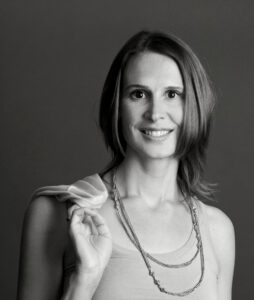This interview is part of an occasional series of profiles introducing you to the people behind 23andMe’s content curation team. This team of 23andMe scientists has the unique job of determining which genetic associations will be reported to customers. Their rigorous process of combing through scientific literature, vetting genetic information and ensuring that published scientific findings meet our standards for inclusion, directly impacts what you see when you log into your 23andMe account. 
“Our job is to differentiate the real data from the noise.”
Bethann Hromatka, Ph.D. is a health content manager at 23andMe. Previously, she double-majored in Biology and Spanish at the University of Oregon, where she started her career as a bench researcher studying maize genetics. After completing her Bachelor of Arts, Bethann researched RNA splicing, yeast genetics and Candida albicans host-pathogen interactions (the yeast that causes yeast infections). She completed her Ph.D. at University of California, San Francisco in reproductive biology. There she studied the development of the human placenta and pregnancy complications, including placental malaria.
In her current role, Bethann helps manage the content curation process, developing the reports that consumers will see on the website and providing documentation as part of the FDA submission process.
What were you researching before you came to 23andMe?
From: Stillwater, Minnesota
Education:
BA, Biology and Spanish, University of Oregon
PhD, Reproductive Biology, UC, San Francisco
Fun Fact: Working mother of infant twins
Most recently I researched malaria infection during pregnancy and glycosylation during the development of the human placenta. I was a bench researcher for more than 10+ years, which included time spent isolating and analyzing DNA, RNA and proteins, as well as dissecting human placental tissue and growing human cells and malaria.
How does your previous experience relate to what you do at 23andMe?
I have a broad research background, from studying maize and yeast, to reproduction and infectious diseases. Most of what I’ve worked on has been human-based research, and therefore I had a broad view of human disease, which is very closely tied to what we do at 23andMe.
Part of the job of any Ph.D. student is to stay on top of scientific literature as it relates to your work. Those same analytical reasoning skills apply to writing 23andMe’s health report content. There’s often a flood of research studies and we have to decide what’s relevant and what’s not by critically evaluating the most recent literature. In that way, our job is to differentiate the real data from the noise. In doing so, we’re setting the standard for aggregating research.
Why are you excited about genetics?
Genetics is fundamental to human existence and touches our lives in so many ways. It explains a lot about why we act and look a certain way, and plays a big role in helping us stay healthy or increasing our risk for disease.
Tell us about one of your interesting findings at 23andMe.
It’s estimated that up to 70 percent of a person’s risk for motion sickness is due to genetics, but the genetics of motion sickness was traditionally poorly understood. At ASHG 2012, I presented results from a genetic study of more than 80,000 23andMe customers who were surveyed about motion sickness. The analysis identified 35 genetic associations with motion sickness that fall into a few different biological categories. Some genetic variants are involved in development, including development of the eye and ear. Other variants are involved in neurological processes as well as glucose and insulin regulation.
Tell us about a recent breakthrough in genetics research that you think will have a big impact.
I’m interested in the new fetal DNA blood-based tests for trisomies. With this kind of test, most pregnant women no longer need to undergo invasive and scary testing (e.g., chorionic villus sampling and amniocentesis) for Down syndrome and other trisomies.
What’s something interesting you learned from your 23andMe results?
Through testing with 23andMe, I learned that I’d inherited two mutations for hereditary hemochromatosis, also known as iron storage disease. While my particular combination of mutations only posed a slight risk for developing iron overload, I decided to share the information with my physician to see if follow-up testing was warranted. In the end, I made lifestyle changes to push my iron markers into the healthy range, and I’ve also talked to my family about their risk for developing the condition.
What’s one thing the average consumer should know about genetics?
Knowing about your genetics can help you be more proactive about staying healthy.



